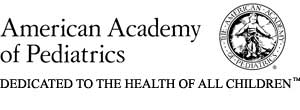

Symptoms of Motion Sickness
The symptoms of motion sickness usually start with a vague feeling of stomach upset (queasiness), a cold sweat, fatigue and loss of appetite. This then progresses to vomiting. A young child may not be able to describe queasiness but will demonstrate it by becoming pale and restless, yawning and crying. Later she will lose her interest in food (even her favorite ones), and finally, she will vomit.
We do not know why this happens more often in some children than others, but it is most likely due to an increased sensitivity to the brain's response to motion. This response can be affected by previous bad car trips but usually improves as a child gets older.
Motion sickness occurs most often on a first boat or plane ride, or when the motion is very intense, such as that caused by rough water or turbulent air. Stress and excitement also can start this problem or make it worse.
Treatment of Motion Sickness
If your child starts to develop the symptoms of motion sickness, the best thing to do is stop the activity that is causing the problem. If it occurs in the car, stop as soon as safely possible and let her get out and walk around. If you are on a long car trip, you may have to make frequent short stops, but it will be worth it. If it happens on a swing or merry-go-round, stop the motion promptly and get your child off the equipment. She probably will be upset and scared, so try to help her relax. Otherwise, what should be a happy time will become a dreaded experience. Most important, do not get angry with your child, because she cannot help what is happening. Be as supportive of her as you can, or she may refuse to travel or have a temper tantrum the next time you ask her to get into the car or board a plane or boat.
Preventing Motion Sickness in Cars
Because "car sickness" is the most common form of motion sickness in children, many preventive measures have been developed. In addition to the frequent stops, you might try the following.
If none of the above works, stop the car and have her lie on her back for a few minutes with her eyes closed. A cool cloth on the forehead also tends to lessen the symptoms.
Motion Sickness Medications
If you are going on a trip and your child has had motion sickness before, you might want to give her medication ahead of time to prevent problems. Some of these medications are available without a prescription, but you should ask your pediatrician before using them. Although they can help, they often produce side effects, such as drowsiness (which means that when you get to your destination your child might be too tired to enjoy it), dry mouth, and nose or blurred vision. Less common reactions include skin rashes, blood pressure changes, nausea and vomiting. Some children actually become agitated from these medicines rather than drowsy. The skin-patch-type motion-sickness medications should never be used on young children.
When to Call the Pediatrician for Motion Sickness
Although it does not happen often, dehydration can occur from the vomiting and poor fluid intake that may accompany motion sickness. If you feel that your child is becoming dehydrated, take her to the nearest physician's office or to an emergency room. If your child has symptoms of motion sickness at times when she is not involved with a movement activity, particularly if she also has a headache, difficulty hearing, seeing, walking, or talking, or if she stares off into space, tell your pediatrician about it. These may be symptoms of problems other than motion sickness.
The recommendations in this statement do not indicate an exclusive course of treatment or serve as a standard of medical care. Variations, taking into account individual circumstances, may be appropriate.